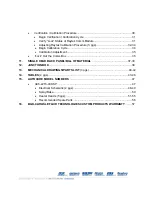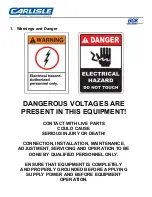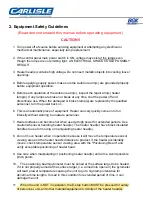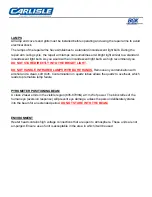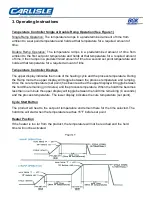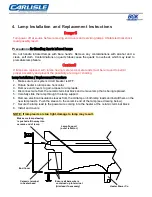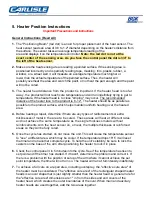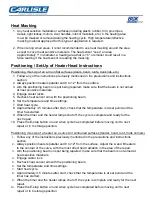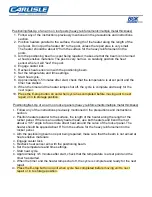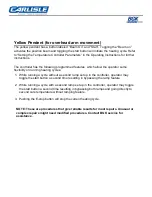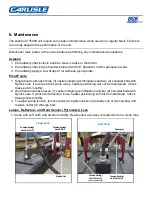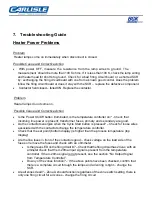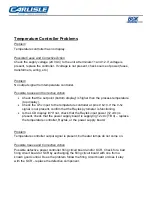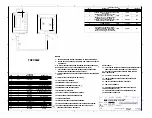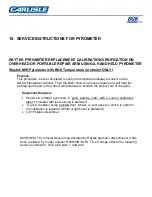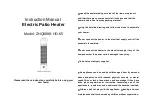
Heat Masking
1. Any heat sensitive materials or surfaces (including plastic, rubber, trim, pin stripes,
decals, light lenses, mirrors, door handles, interior materials, etc.) in the heating area
must be masked or removed during the heating cycle. High temperature/reflective
masking material approved for this type of application is required.
2. When curing small areas, it is not recommended to use heat masking around the area
except to cover heat sensitive materials. The heat sensor "sees" an area
approximately 1" in diameter, a heating area that is 1.5" or smaller could result in a
false reading if the heat sensor is reading the masking.
Positioning / Set-Up of Heater Head Instructions
Positioning / Set-Up of an arm on flat surfaces (doors, hood, roofs, trunk lids, etc.)
1. Follow any of the instructions previously mentioned in the precautions and instructions
section.
2. Always position heaters parallel and 8 to 12" from the surface.
3. Aim the positioning beam on spot being repaired; make sure that the beam is not aimed
at heat sensitive materials.
4. Engage caster locks.
5. Recheck heat sensor aim with the positioning beam.
6. Set the temperature and time settings.
7. Start heat cycle.
8. Approximately 3-5 minutes after start, check that the temperature is at set point and the
timer has started.
9. When the timer and the heater lamps shut off, the cycle is complete and ready for the
next repair.
10. Press the E-stop button on unit when cycle has completed before moving unit to next
repair or in to storage position.
Positioning / Set-Up of a heater on a curved or contoured surfaces (fender, hood, roof, trunk corners)
1.
Follow any of the instructions previously mentioned in the precautions and instructions
section.
2.
Always position heaters parallel and 8 to 12" from the surface. Adjust the A and B heaters
to the contour of the curve, with the most direct heat radiation in the area of the repair.
3.
Aim the positioning beam on spot being repaired; make sure that the beam is not aimed at
heat sensitive materials.
4.
Engage caster lock.
5.
Recheck heat sensor aim with the positioning beam.
6.
Set the temperature and time settings.
7.
Start heat cycle.
8.
Approximately 3-5 minutes after start, check that the temperature is at set point and the
timer has started.
9.
When the timer and the heater lamps shut off, the cycle is complete and ready for the next
repair.
10.
Press the E-stop button on unit when cycle has completed before moving unit to next
repair or in to storage position.
Summary of Contents for BGK AutoCure 6000-2216
Page 1: ...AutoCure 6000 2216 Overhead Heater Assembly and Operating Manual ...
Page 22: ......
Page 23: ......
Page 37: ......
Page 38: ......
Page 41: ...A DETAIL J SCALE0 40 1 REMOVET1 11SBOLTAFTERINSTAI I ATION ...
Page 43: ......
Page 44: ......
Page 45: ......
Page 46: ......
Page 47: ...AUTOCURE MODEL NUMBER AC6 2216 480 SP ...
Page 48: ......
Page 49: ......



